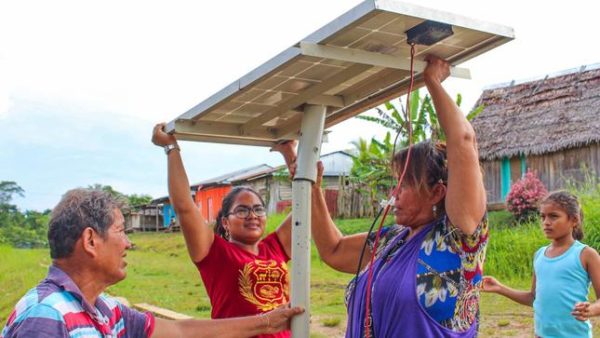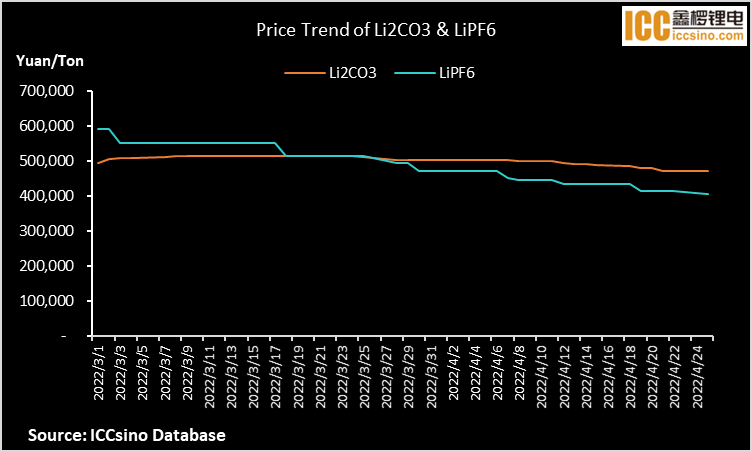https://www.pv-magazine.com/2022/04/26/the-hydrogen-stream-fuel-cell-that-uses-iron-instead-of-expensive-platinum/
The Hydrogen Stream: Fuel cell that uses iron instead of expensive platinum

The fuel cell developed at the Imperial College London.
Image: Imperial College London
Imperial College London researchers have presented a hydrogen fuel cell that uses iron instead of platinum. The research team created a catalyst using only iron, carbon, and nitrogen – materials that are cheap and readily available – and showed that it can be used to operate a fuel cell at high power. Their findings are published in the paper “High loading of single atomic iron sites in Fe–NC oxygen reduction catalysts for proton exchange membrane fuel cells,” published in nature catalysis. The scientists stated that around 60% of the cost of a single fuel cell is the platinum for the catalyst. “In lab tests, the team showed that a single-atom iron catalyst has performance approaching that of platinum-based catalysts in a real fuel cell system.” The team used a synthetic method called transmetallation to avoid forming iron clusters during synthesis. The academics are also cooperating with UK fuel cell catalyst manufacturer Johnson Matthey to test the catalyst in appropriate systems and hope to scale up the new tech in commercial production. “Our cheaper catalyst design should make this a reality, and allow deployment of significantly more renewable energy systems that use hydrogen as fuel, ultimately reducing greenhouse gas emissions and putting the world on a path to net-zero emissions,” they affirmed.
Ontario-based Hydrofuel Canada, a company delivering green ammonia and hydrogen, has completed an exclusive license agreement with Georgia Institute of Technology for their patent-pending Micro Ammonia Production System (MAPS) system “which enables high-yield, sustainable ammonia synthesis from air and water with unprecedented efficiency using a gas-phase electrochemical process.” The technology uses hollow hybrid plasmonic nanocages to create an electrocatalyst for ammonia synthesis from nitrogen (N2) and water (H2O). The technology works under ambient temperatures and pressure in the gas- and liquid-phase system. Hydrofuel will combine MAPS with its Kontak Hydrogen from Ammonia Separation Modules. “Utilizing MAPS technology with renewable energy to produce cost effective green ammonia is a major development. Using that ammonia with Kontak's technology, which Hydrofuel has previously acquired, is a game changer,” wrote Hydrofuel Canada on Monday. Kontak's technology can release hydrogen from a dozen potential carrier molecules. Of the carriers, the highest storage capacity is anhydrous ammonia, with (17.3% hydrogen by weight) stored in liquid form like propane. “Kontak's patented reactor is the most effective method to date for releasing hydrogen.” The hydrogen is filtered and sent directly to a fuel cell or internal combustion engine. According to the company, these technologies produce “green NH3 using $.02/kWh electricity for as low as $220 a tonne, whereas fossil-fuel derived NH3 is currently selling at $1,500 to $2,000 a tonne.” The Canadian company adds that green hydrogen can be separated from this ammonia to sell at about $1.50 a kg.
Norway's Aker Horizons, through its portfolio company Aker Clean Hydrogen, and Norwegian power company Statkraft have signed collaboration agreements to jointly explore green hydrogen and ammonia production opportunities in India and Brazil, targeting local steel and fertilizer industries. “With considerable renewable energy production and market activities in India and Brazil, Statkraft is well positioned to capture green hydrogen opportunities in these two huge and important energy markets. Developing such opportunities helps us grow our business and reduces greenhouse gas emissions in India and Brazil,” said Jürgen Tzschoppe, Statkraft's executive vice president for international power.
Researchers at the Clemson Nanomaterials Institute (CNI) and their collaborators from the Sri Sathya Sai Institute of Higher Learning (SSSIHL) in India said they discovered a novel way to combine curcumin, a substance in turmeric, and gold nanoparticles instead of platinum to create an electrode that “requires 100 times less energy to efficiently convert ethanol into electricity.” According to CNI, the discovery brings one step closer the replacement of hydrogen as a fuel cell feedstock. The researchers focused on the fuel cell's anode, where the ethanol or other feed source is oxidized. “Curcumin is used to decorate the gold nanoparticles to stabilize them, forming a porous network around the nanoparticles.” Researchers deposited the curcumin gold nanoparticles on the surface of the electrode at 100 times lower electric current than in previous studies.
European Commission President Ursula von der Leyen and Indian Prime Minister Narendra Modi said that the European Union and India should increase cooperation in the solar and green hydrogen sectors. Speaking at the Raisina Dialogue, a multilateral conference taking place in New Delhi, Amitabh Kant, CEO of the government public policy think tank NITI Aayog, said: “India has the size and scale to become a leader in green technologies. The developed countries have not lived up to their promise of low-cost finance.” Raisina Dialogue attendees also discussed hydrogen. Norway is looking for hydrogen opportunities in the subcontinent. Vegard Frihammer, CEO of Greenstat Norway, told the Statesman on Sunday that the company wanted to explore options in the country's industry and maritime sector.
Popular content
UAE-government-owned renewable energy company Masdar and Egypt-based investment and development company Hassan Allam Utilities have signed two memorandums of understanding with Egyptian state-backed organizations to develop green hydrogen production plants in the Suez Canal Economic Zone and on the Mediterranean coast. The two companies aspire to take a leading role in developing green hydrogen production plants in the region, targeting an electrolyzer capacity of 4 gigawatts (GW) by 2030 and an output of up to 480,000 tons of green hydrogen per year. Last week, AMEA Power, an Emirati renewable project developer, and Egyptian authorities signed an MOU to produce 390,000 tonnes of green ammonia per annum over two phases in Ain Sokhna, Egypt.
Last week, French green hydrogen producer Lhyfe said France's financial markets authority AMF had cleared the way for the company's initial public offering on the Euronext stock market in Paris after approving its registration document, Reuters reported. Lhyfe, which raised €10 million from Japanese conglomerate Mitsui & Co earlier this month, is developing an offshore hydrogen production facility connected to a floating wind turbine. The project, reportedly the first of this type globally, should enter the test phase by September.
Clear Hydrogen UK announced an expansion of its agreement with Canada's Proton Technologies. “In 2021, CHUK's founders invested CAD 3.7 million in Proton to obtain a 20 tonne per day production license for use in the UK and Ireland. The expansion announced today is 250 times larger, giving an implied total license value as high as CAD 925 million for 5,000 tonnes per day,” wrote the company on Monday.
This content is protected by copyright and may not be reused. If you want to cooperate with us and would like to reuse some of our content, please contact: editors@pv-magazine.com.



